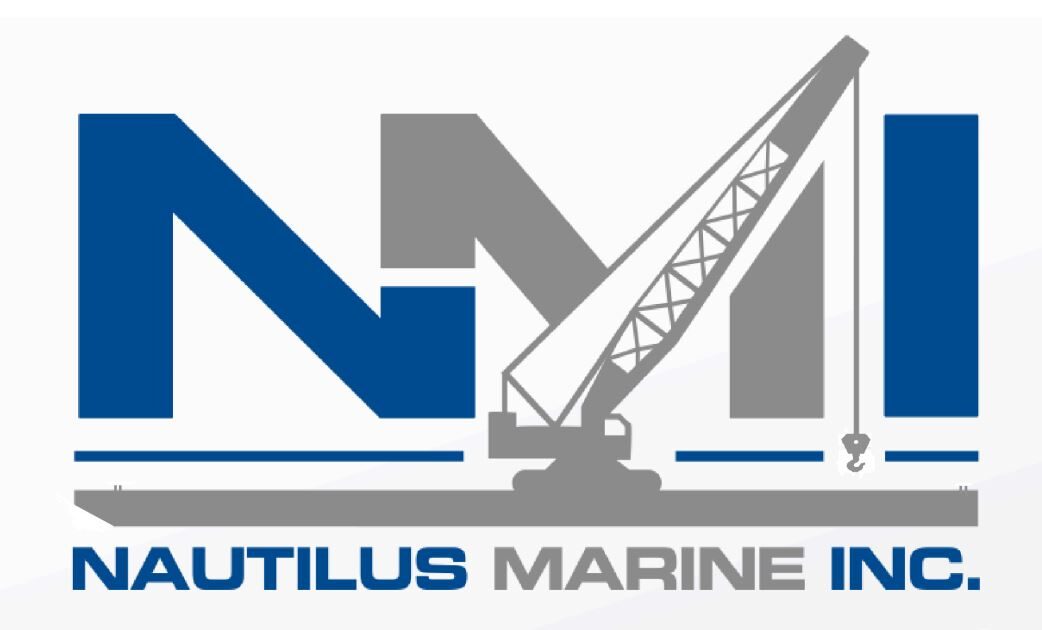A Hard Lesson In Stability
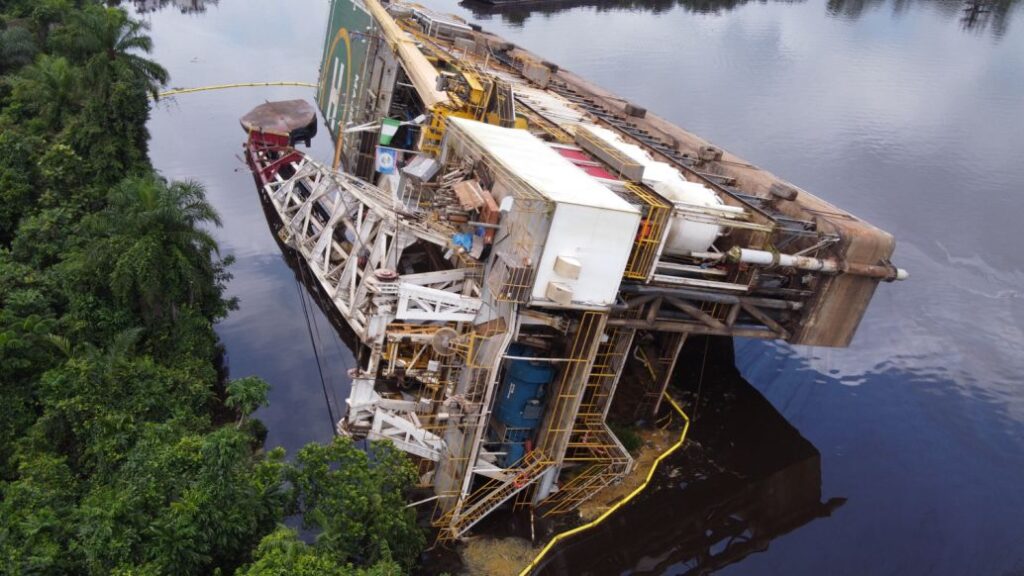
On October 2nd, 2023, MegaDrill Services Ltd. contacted Nautilus Marine Inc. about a situation with their drilling barge “MAJESTIC”. The drilling barge had capsized on the way to a job in the Seplat oilfield in Sapele, Nigeria.
Based on the information received from Client (MegaDrill), Nautilus Marine would manage and help develop an executable salvage plan to refloat the “Majestic”. Due to the limitations of the narrow and shallow river were the “Majestic” capsized, there was limited space to utilize large equipment to roll the “Majestic” upright. In addition, the local communities where against restricting the navigable channel and the land adjacent to the rig was all swamp.
MegaDrill presented the idea of using cantilever arms, water weights, and lift bags to overcome the capsized condition and roll the “Majestic” back to an upright position.
So, utilizing the local assets available, we began the process of identifying the rigs true condition, this included sealing all vents, hatches, and openings that were accessible, as well as pumping all starboard and center tanks. At the same time, fabrication began on the cantilever arms. Before working on the lower parts of the Rig, Nautilus Marine’s salvage crew used rope access techniques to remove many of the hazards created by the capsizing. These hazards included unstable cargo, loose gas bottles, and hazardous materials, all these hazards were mitigated or removed. At the same time, the plan called for the removal of the 198mt drilling mast and topping drive from the topside of the rig. Using a crane barge and a metal shear the mast was cut into manageable pieces and removed. A larger crane was brought in to remove the 25mt topping drive and install the cantilever arms.
Once the rig was safe to work on, the crews began installing the cantilever arms, then the water weight bags, and finally the lift bags, all were installed, tested, and inflated.
Once the water weight bags (35mt and 55mt bags) and lift bags (5mt) were filled the “Majestic” rolled 30 degrees, from 77-degrees to Port to 47-degrees to Port.
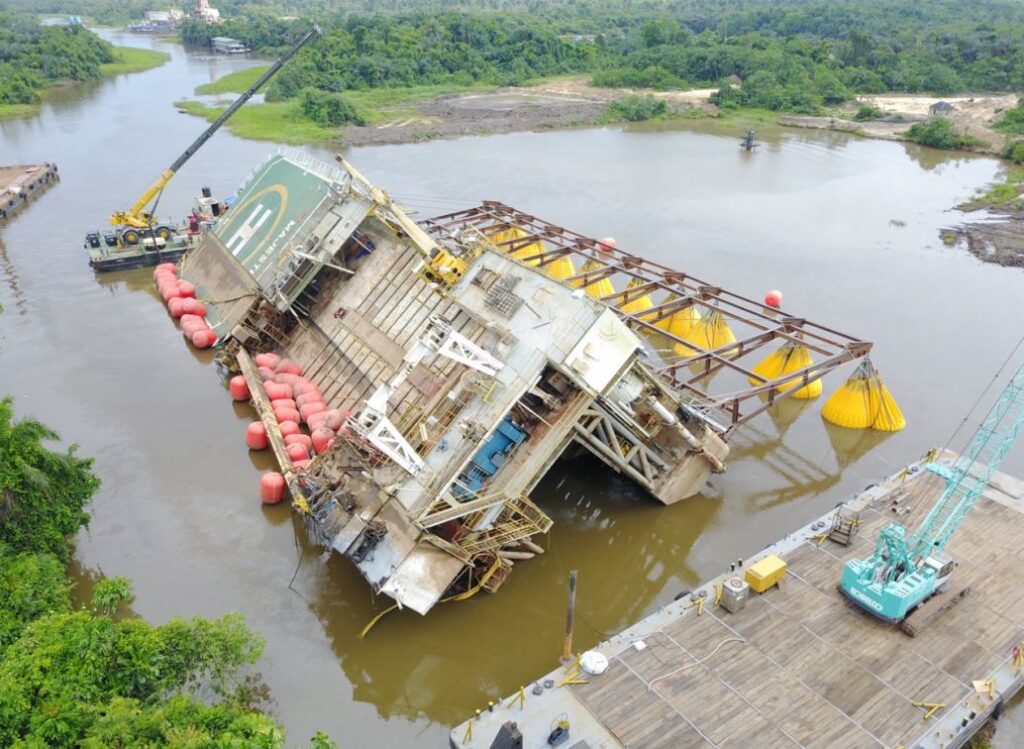
The Nautilus crew began installing salvage hatches and 4-inch submersible pumps to dewater the remaining Portside tanks. We got the stern of the rig floating and all but two of the Portside tanks pumped out. Due to the soft river bottom it was necessary to flood several tanks on the starboard side to roll the Majestic from a list of 47-degrees to port to 28-degrees to port. This was just to bring the Rig within the parameters of being able to self-refloat without outside assistance. When the rig finally rolled, due to the lack of support from the river bottom and momentum created by the roll, it overshot our targeted vertical position by 17 degrees to starboard and came to rest on the Cantilever arms. The following day, we continued pumping the vessel following the planned recovery sequence. With only two tanks to go, the operations were stopped for Daylight-only security protocol. That evening, the vessel down flooded through inflatable plugs and forced the cantilever arms to collapse, causing significant damage to the starboard side tankage. To counter a severe starboard list, the port side was flooded, the vessel came to rest at a position of 23 degrees to starboard.
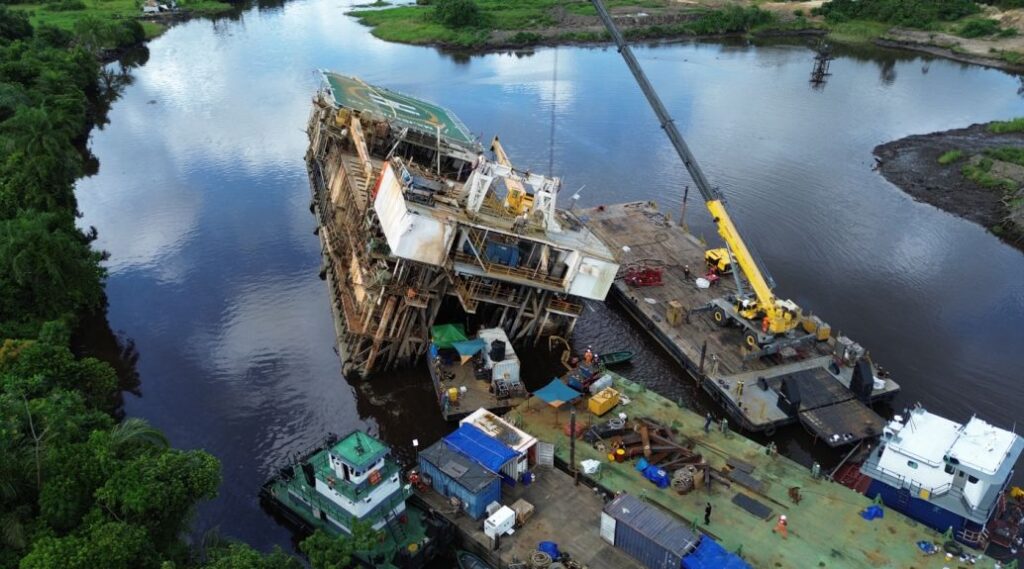
The Nautilus dive team assessed the damage and began making repairs to the starboard side shell of the rig. It was necessary to jet down through 16’ feet of mud to cut off the cantilever arms and weld plates on the damaged hull. While the repairs were being conducted, Smit salvage was employed and confirmed the limited path forward. The engineering team found through computer models that it would be necessary to utilize external buoyancy to support the refloat effort. One problem was the lack of structure to tie into on the “Majestic” to support the missing 1500mt of buoyancy. So, a series of bits and softeners were designed to tie the “Majestic” to a 280’ x 90’ x 16’ barge that was brought in for external buoyancy. Another problem was the shear weight of the rig, and the momentum generated during the refloat. Several solutions were taken to help mitigate those forces. One of the solutions was to have 5 – 21-inch x 120-foot steel piles driven along the convergence area of the two vessels. In addition, to further reduce the 1500mt load, the teams placed a quantity of 1,485 – metric-ton supersacks of sand under the portside. The starboard side of the “Majestic” was pumped out. This sent the portside of the rig into the steel piles. The 20 sets of 4” nylon lines from the barge to the rig, took a substantial part of the load. The remainder of the load was transferred to the sandbags under the portside. The hull of the “Majestic” penetrated 2m into the packed sandbags, finally coming to rest and allowing the portside to be pumped out. On November 21st, 2024, the “Majestic” was completely refloated, and four days later the rig was redelivered to the customer.
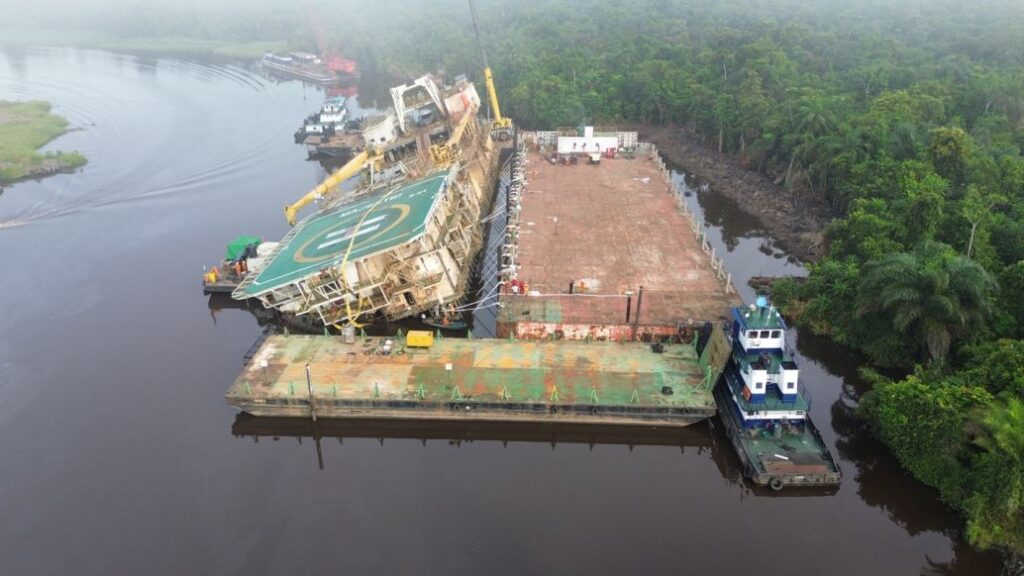

Summary
Through persistence and hard work of the Nautilus, MegaDrill, and Depthwize Teams and with the input of Smit and Gray Seas engineering the drill rig “Majestic” was recovered. The key take aways were, even though the team removed over 225mt from the very top of the rig, the rig was still unstable in the soft river bottom. These types of drill rigs are inherently unstable, when mixed with the organics and the mud of the river bottom, this rig was unable to be refloated by normal means. By introducing the external buoyancy, 21” piles, and sandbags we were able to overcome this condition. All the mitigation techniques performed as expected, thus making the project a success. During the recovery efforts, there was no indication of the original cause of the incident.
